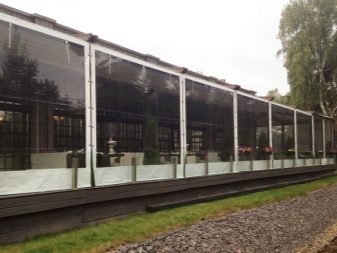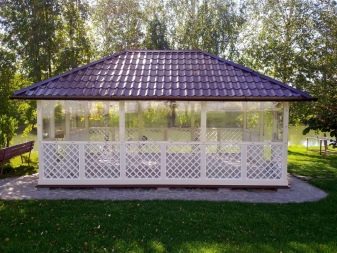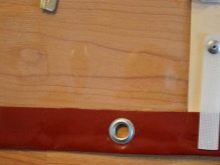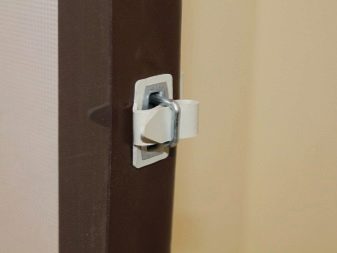Soft windows: what are they and where are they applied?

Soft windows, or PVC curtains, are in great demand among buyers, because they have high performance and original appearance. The fact that this is where they use these designs, whether it is possible to perform the installation yourself, as well as many other things will be discussed below.
Special features
Flexible windows are made of polyvinyl chloride film, which has a dense structure and excellent technical characteristics. They perfectly replace glass materials for the device of a transparent protection of various rooms: verandahs, penthouses, arbors, terraces. The first to appreciate the soft windows of the owners of summer restaurants and cafes.
This product can be used all year round. Thanks to this installation, comfortable conditions are created in the summer when it rains. In addition to rain and wind, the film can protect the structure from snow in winter.
PVC film does not have 100% tightness, but when using heat sources (electric fireplace, heat lamp), you can hold any event in the room where the flexible windows are installed.
Due to the fact that flexible window designs are made of high quality PVC, according to user reviews, they have a lot of advantages that deserve a detailed description.
- Reasonable price of products. The cost of soft windows is 2 times less than that of a classic glazing with a wooden or plastic frame.
- High strength to deformation (stretching, breaking).
- Product safety. When breaking or cutting material is easily replaced, it is important in the presence of small children.
- Fast assembly and disassembly of the material. The design is established and dismantled within several minutes. The main thing is to purchase the necessary fasteners and tools.
- Attractive appearance. These windows do not hide the design, and also allow you to admire the surrounding nature, being in a comfortable room.
- Long operational period, more than 10 years. The durability of the product is determined by the technical characteristics of the building material, which is resistant to aggressive environments.
- Large product range among which you can choose a suitable variation of the windows of the desired design and color.
- The product maintains temperature conditions in the range of -40 ... +80 degrees, without losing quality characteristics.
- Easy care. It is possible to look after flexible window designs both manually and automatically.
- Non-toxic material as a result, it does not cause allergic reactions. At high temperatures, it does not melt and does not emit harmful substances.
In addition to a large number of advantages, flexible windows have certain disadvantages that need to be considered:
- With careless use of this product, there is a risk of deformation of the canvas, which is beyond repair. Such material must be replaced with a new one.
- A large indicator of thermal expansion.At low degrees, the material is compressed, which can lead to tearing of the web at the site of stretching.
- The material does not pass air, therefore in poorly ventilated rooms there will be a high level of humidity and temperature.
To avoid the greenhouse effect, it is better to install structures with a built-in window, which can be opened if necessary.
Specifications
Manufacturing technology of soft windows is performed in two ways:
- Stitching. Flexible windows of various configurations are stitched with a sewing machine. To sew such a canvas, synthetic water-repellent fabric and lavsan threads, which are resistant to temperature extremes, are used.
- Welding. A Korean-made polyvinyl chloride material is used.
Arbor windows are made from a film material that has a thickness in the range of 500 to 700 units. The second variation of the film is a more durable building material. The width of the product is 140 cm. If the width of the opening is wider than the film, then the film pieces can be soldered by means of a building hair dryer. A jet of hot air connects several pieces of film material, thus an overlap of 3 cm will be formed.
To reinforce the mount and the film itself, it is necessary to apply a edging material. The width of the border is 5 cm. For doors, special zippers are used, which are 1 cm thick.
Kinds
The construction market offers many variations of soft windows for decorating the verandas, gazebos, and attic rooms. Experienced builders know that it is better to choose synthetic building materials that are highly resistant to aggressive environments. Soft windows are made from several materials:
Polyvinyl chloride
PVC is mainly used for making flexible windows. Such designs will serve a fairly long life, without requiring replacement of the material. After all, this building material has high technical characteristics. These include:
- High level of strength and ductility.
- Durability.
- Resistance to moisture, UV radiation, temperature extremes. The appearance of mold and mildew is excluded on the surface of the material.
- The material is fireproof, which allows its use next to the grill.
These constructions can be completely transparent or partially transparent: the upper part is darkened, and the lower part remains visible. PVC windows can be of various thicknesses.
Polyurethane
Soft windows can be made not only from PVC, but also from polyurethane. They have a smaller thickness, but at the same time they are not inferior in their performance characteristics to a PVC material. Due to the high level of elasticity, these products are difficult to tear or pierce. They can be used in sub-zero temperature conditions, can withstand up to -80 degrees, without losing their appearance and without being deformed.
Polyurethane does not allow ultraviolet rays to penetrate inside the room; on the contrary, it reflects them. But is not an obstacle to the penetration of sunlight. At the same time, indoors, an optimum temperature is created both in summer hot days and in the winter season.
Polyester
From such a material, webs are made with different strength indices. Like the previous types of materials, polyester has several advantages:
- long service life;
- high resistance to moisture and temperature extremes;
- excellent indicator of strength and elasticity;
- material is fire resistant;
- easy care;
- there is a possibility of painting the window product in various color shades and applying images;
- resistance to deformation.
Basically, polyester is used for the manufacture of windows, which are opened by winding the material on a special shaft of an open or closed type, and fixation is carried out with a special strap. This feature allows you to open the window to the desired height.
There are two types of soft windows:
- Transparent. They perfectly let in light and air, creating a wonderful atmosphere around them, as if the room is breathing. Such designs do not fade in the sun. But the density of such windows is much less, because in their composition there is no lavsan filament.
- Colored. Such PVC products are produced in various color shades, there are even variations of colored windows with printed print or image. Curtains create an intimate atmosphere in the room, hiding everything that happens inside the room from prying eyes. In some cases, colored windows are used in combination with ordinary glass products.
Scope of application
The scope of soft windows is quite wide. For example, they can be used as an additional way to attract more visitors to restaurants.In private estates and cottages, protective transparent structures are used to shelter gazebos, verandas, terraces, and greenhouses. Sometimes they are used for decoration of balconies in apartment buildings.
Accessories and tools
With the help of special fastenings soft PVC windows securely and firmly fixed to the frame base. And there are several variations of fasteners:
- With swivels. The easiest way to use spring clips and eyelets.
- With straps and straps. Inexpensive fastening method with adjusting clasps. In order for the web to be fixed evenly, it is necessary to perform a calculation for the location of the brackets. Putting on a soft cloth on the bracket, it is fixed with a strap, the fixation is completed on this.
- With sliding mechanism. An attractive mounting method with a frame roller system. To fix such fastenings, the canvas is attached to specialized frames, the movement of which is carried out on rollers, thus creating the possibility of opening or closing the window without dismantling the entire structure.
Fixing elements for soft windows are installed in two variations.The first is that the fasteners are mounted on 4 sides of the frame, which allows you to dismantle the structure in the summer. The second option is to install mounts on the sides and bottom of the frame. The grommets are fixed in the upper part for mounting the windows by means of screws.
How to set your own hands?
Before self-installation of soft windows must be performed certain sequential actions.
- Order a qualified measurement of openings, where soft windows will be located, or make measurements yourself.
- Choose edging building material.
- To determine the method of attachment.
- Proceed to mount the structure.
To design served a long service life, it is necessary to make the correct measurements of the window opening. First, measure the height and width of the light aperture, and also need the height and width of the beams, which are located between the light apertures. To these indicators you need to add 5 cm on each side, where they will install the fastening elements.
With the existing protrusions on the structure it will be quite difficult to make the right measurements, in this case, it is better to seek the help of professionals.
Installing one soft window as a whole takes about 20 minutes.The mounting is performed by marking the location of the micro-holes along the contour of the window on the base to which it will be fixed. After drawing a marking in the specified places the accessories are established. The window system is mounted on the prepared basic structure. The standardized distance between the side fastening elements is 40 cm, in the upper part the range between the fasteners is about 30 cm.
Equally important is the edging when installing flexible windows, which is a strip of different materials: fabric, film, PVC. They can be of different colors and a width of at least 5 centimeters. This allows you to choose a suitable edging for the general appearance of the room.
On wide areas of the window product - more than 1.5 meters - it is possible to install a lock on the border around the full size of the canvas, this allows opening and closing the window as needed. There are 2 types of edging for soft windows: awning and moisture resistant (PVC). Both varieties are of high quality.
The piping of polyvinyl chloride is usually soldered to the window, so the risk of breakage in this case is not terrible.PVC material does not fade under the influence of UV rays and is not deformed under the influence of temperature drops. Awning edging is attached to the window by flashing, which is not always effective. Available in various colors: white, red, brown, beige, black, lime.
There is also a simple and inexpensive variation of self-manufacturing of 4 pillar gazebos that will securely hold the roof. The space between them can simply be tightened with roll film material.
Tips for use and care
To keep the soft windows in perfect condition, it is necessary to perform regular cleaning of the structure with detergent synthetic solutions. For large areas of glazing, it is better to use a hose with a special nozzle to disperse water. The edge should be cleaned with a soap solution and a brush of medium hardness. Window cleaning is carried out according to the degree of pollution or immediately after the rain.
Do not use brushes, sponges for washing the film, it is better to use a soft cloth (microfiber). Sponges can leave stains on the surface of the material, and brushes can scratch the product or tear it.Flexible windows do not need to be dismantled for the winter period, but if it is necessary to remove the film, then it is preliminarily cleaned of impurities with the addition of cleaning agent and rinsed with clean water. After wiping dry.
It is forbidden to use cleaning products that contain alcohol and solvent. Such substances, interacting with the material of soft windows, cause a chemical reaction that adversely affects the density of the product.
It is necessary to store material in a curtailed state, without bending it and without squeezing. Storage of soft windows is carried out in a dry warm room, so that there is a source of heating. Metal grommets may rust due to high humidity, leaving traces of rust on the film.
If the PVC sheet comes into contact with the ground, experts recommend installing anthers that protect the room from dust and various contaminants. To protect window designs from insects, manufacturers make a mosquito net, which is easily cleaned from any types of contamination.
Operating rules
It is important to know the following:
- Experts do not recommend folding flexible windows with an envelope, the most suitable folding variation is roll.
- It is not necessary to remove the design in the sub-zero temperature, sudden changes in temperature can lead to deformation of the canvas (rupture of the seam of the product, fracture of the blade).
- Keep soft windows only in a ventilated dry room.
- After installing flexible windows, do not roll up the structure for a roll for 1.5–2 weeks. It is necessary that the product takes the correct form.
In conclusion, we offer a review of soft windows.

















































